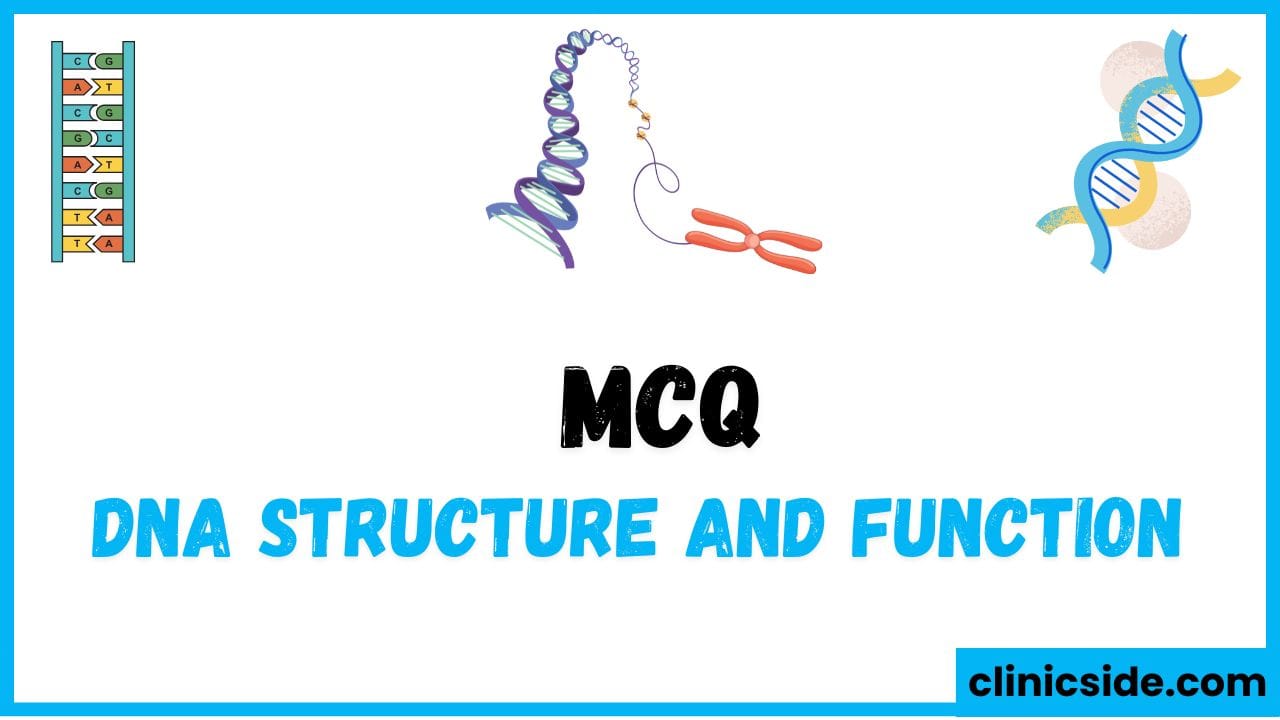DNA Structure and Function: Key Concepts for Understanding Genetics
This guide covers foundational concepts in DNA structure and function, exploring how DNA acts as the blueprint of life. These MCQs address various aspects of DNA, including its molecular structure, replication mechanisms, and role in encoding genetic information. Below are the key topics included in the quiz:
1. Introduction to DNA: The Blueprint of Life
- Full Form of DNA: DNA stands for Deoxyribonucleic Acid, a molecule that carries genetic information necessary for growth, development, functioning, and reproduction of all living organisms.
- Location of DNA in Cells: In eukaryotic cells, DNA is primarily located in the nucleus, while in prokaryotic cells, it resides in the cytoplasm.
2. DNA Structure: Double Helix and Base Pairing
- Double-Helix Structure: DNA’s structure resembles a twisted ladder, or double helix, discovered by Watson and Crick. This shape is formed by two intertwined strands.
- Nucleotides and Base Pairs: DNA is composed of nucleotides, each containing a sugar, a phosphate group, and a nitrogenous base. The four nitrogenous bases – Adenine (A), Thymine (T), Guanine (G), and Cytosine (C) – pair specifically (A-T and G-C) through hydrogen bonds, which hold the two strands together.
3. Role of Enzymes in DNA Replication
- DNA Replication Process: DNA replication is a semi-conservative process where each new DNA molecule contains one original strand and one new strand.
- Key Enzymes: During replication, Helicase unwinds the DNA double helix, DNA Polymerase adds new nucleotides to the growing DNA strand, and DNA Ligase joins fragments of DNA, especially on the lagging strand.
4. Components of DNA: The Backbone and Bases
- Backbone Composition: DNA’s backbone is composed of alternating sugar (deoxyribose) and phosphate groups, providing structural integrity.
- Nitrogenous Bases: The nitrogenous bases – adenine, thymine, cytosine, and guanine – encode genetic information. Their order determines the genetic instructions for building proteins.
5. DNA Replication and the Cell Cycle
- DNA Replication in the Cell Cycle: DNA replication occurs in the S (Synthesis) phase of the cell cycle, ensuring that each new cell receives an identical copy of DNA.
- Semi-Conservative Replication: Each strand of DNA serves as a template for a new strand, resulting in DNA molecules that are half old and half new.
6. Central Dogma of Molecular Biology
- Flow of Genetic Information: The central dogma describes the flow of genetic information from DNA to RNA to Protein. DNA is transcribed into RNA, which is then translated to synthesize proteins that perform cellular functions.
7. Genetic Coding and Nitrogen Bases
- Genetic Code: DNA sequences of nitrogenous bases encode genetic instructions. The order of bases (A, T, G, C) in a gene determines the order of amino acids in a protein.
- Complementary Base Pairing: Specific pairing between bases (A with T, G with C) ensures accurate DNA replication and transmission of genetic information.
8. DNA and Heredity: Nucleotides as Building Blocks
- Nucleotides: Nucleotides are the basic building blocks of DNA, consisting of a sugar, a phosphate group, and a nitrogenous base. Together, these nucleotides store and transfer genetic information.






I just wanted to express my gratitude for the valuable insights you provide through your blog. Your expertise shines through in every word, and I’m grateful for the opportunity to learn from you.